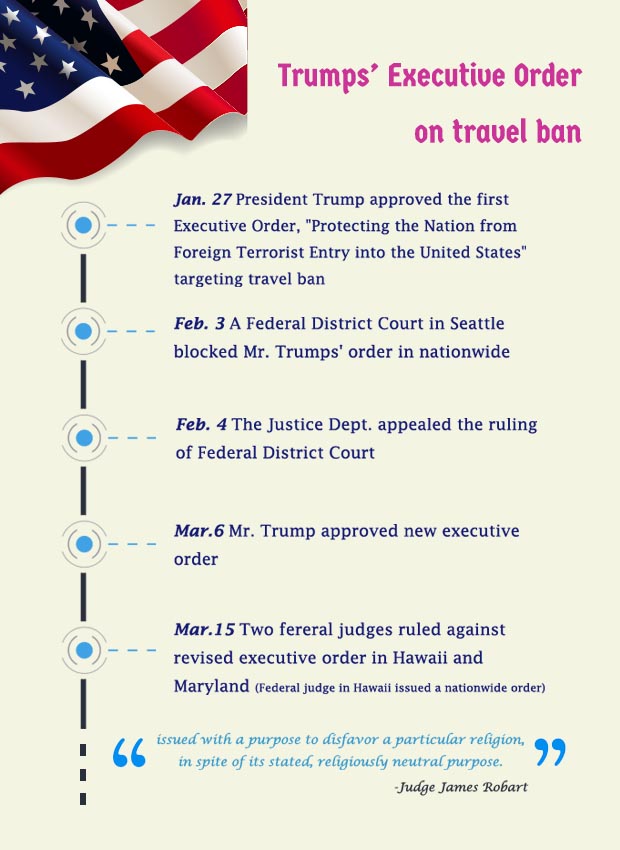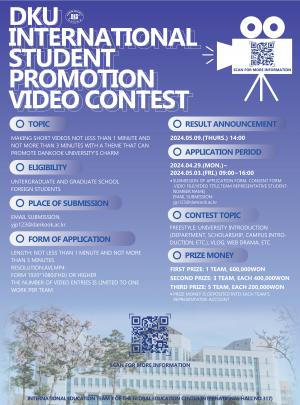On January 27, President Trump signed his first executive order entitled, “Protecting the Nation from Foreign Terrorist Entry into the U.S.” Amid rising concerns that some immigrants could be a threat to society, the former US president signed an order calling for changes to their immigration policies.However, the executive order of President Trump imposed restrictions based on nationality and religion and this provoked many protests across the country. There was no mandate for this policy on behalf of the nation, yet the approved order went into effect immediately, just one week after President Trump was inaugurated and many people were caught off guard by the policy change.
 |
The executive order barred the entry of all refugees to the U.S for 120 days, and blocked Syrian refugees indefinitely. It also blocked citizens, from seven predominately Muslim countries, entry into the U.S for 90 days. The countries impacted were Iran, Iraq, Libya, Somalia, Sudan, Syria and Yemen. The ban included valid green card holders, from those countries from re-entering the US. These were people who already had the right to permanent residency in the US.
Mr. Trump asserted the order was based on the immigration law 1952 that allows the president the ability to suspend the entry of any class of aliens that he finds are detrimental to the interest of the U.S. At the signing ceremony, he said the purposes of the order was to ensure a thorough vetting of people trying to enter the country, in order to prevent the entry of those who are the very same threats our soldiers are fighting overseas. He added, “We only want to admit those into our country those who will support our country, and love our people deeply.” The order also suspended the entry of Syrian refugees until the president determines that their admission would be “consistent with national interest.”
An executive order is the jurisdiction of any president, however no former president has seen the kind of backlash that President Trump had to deal with over this order. It was protested in the US and abroad, by immigrant-rights groups, state governments, local communities and many public figures. Everyone argued that the order was a ‘Muslim ban’ and discriminatory because it was based on nationalities and a religion. People from all walks of life spoke out against the order, and it triggered thousands of citizens to converged on JFK International Airport in New York to protest the travel ban, many of them picketing with slogans denouncing the executive order.
The order was suspended by the courts and on February 2, the Federal court of Appeal rejected a request by the Justice Department of U.S. to restore President Trump’s targeted travel ban. One of the federal judges, who blocked the order, ruled that it was unconstitutional, religious discrimination.
Regardless of the blocking by the federal court and protests by the public, on March 6, President Trump issued a revised executive order to the ban travel. The new order barred travelers six predominantly Muslim countries, sparing Iraq, from obtaining U.S. visas for the next 90 days. All refugee resettlement would be barred for 120 days, and re-entry visas for permanent presidency holders was allowed. However, immigrant-rights groups labelled the executive order ‘Muslim Ban 2.0,’ and stated “The new order unfortunately still has fatal defects, just reduced in scale.” It too was defeated by the courts in the US shortly after its introduction.
Contrary to its intended purpose, the executive order had some serious weaknesses. First, there is no direct correlation between terrorism in the US and the banned nations on the order. The Cato Institute, an American based libertarian group, reported that there were no terror attacks on US soil committed by citizens of any of these 6 nations over the last 40 years (1975~2015). Likewise, the 19 terrorists of September 11, 2001, including Osama Bin Laden, were all from Saudi Arabia, the United Arab Emirates, Egypt, and Turkey, however, one of these nations were include in the list of banned nations.
Critics argued that the order was contrary to the 1965 immigration law that bars discrimination “in the issuance of an immigrant visa because of the person’s race, sex, nationality, place of birth or place of residence.” Because this executive order targeted specific nations, Mr. Trump had violated the core principle of the nation’s immigration law.
The travel ban also reversed the tide of the US refugee program. The number of refugees admitted to the U.S. rose substantially under the Obama administration, with the number of Syrian refugees offered legal status swelling to at least 10,000 in 2016. This was in response to pressure from Europe and countries confronting the global migration crisis. Had the executive order gone into effect, blocking refugees from Syria, it would have had a significant impact on the future of displaced peoples. 12,587 Syrian refugees in total were admitted as refugees to the US and 85,000 others from 15 nations across the globe in 2016.
To learn more about the consequences of the anti-immigration executive order, the Dankook Herald (DKH) interviewed Professor Kim Yeon-jin, of the Dept. of History, majoring in American history on March 9.
First, the DKH asked if the US persisted in its objective to ban refugees, how would this affect Europe and countries already directly confronting the global migration crisis, and the refugees themselves. Prof. Kim suggested the number of refugees seeking asylum in Europe might increase, and those ‘immigrants’ might become more visible. She said that this could raise antipathy towards them, resulted from increased competitions in European job markets and prejudices. By deepening the atmosphere of antipathy, discord between the native population and immigrants might be exacerbated, and it may provoke a change in politics such as rising right-wing known to be against increased immigration. She said, “The order barring refugees, is effectively abandoning an international obligation for humanitarianism. If the executive order were to have taken effect, refugees would have faced even greater dangers and their inevitable journeys would have taken much longer.”
Further, with regards to the effects this kind of policy would have on the US, she suggested the current anti-immigration policies of the US would reverse the image of the nation from one of freedom, equality and human rights to one of protectionism and closed door policies. Since World War Ⅱ, especially after the immigration law in 1965, the US has maintained a relatively open policy for admitting immigrants. America’s founders were pro-immigration and this policy has continued to shape the dynamics of American history.
Professor Kim suggested the executive order of the Trump administration has obvious exclusions of a specific religion and race. These exclusions might also result in a backlash against the US and increase the threat to national security. President Trump has caused problems in the courts and congress, because of these blatant violations of existing immigration laws and constitutional principles. It makes people lose confidence in an administration with an already fractured public opinion. History, and the dynamic progressions and changes as well as the image of the US were all impacted by these actions.
President Trump's principal of ‘America first’ is already raising concerns. The exclusion based on nationality raises concerns of prejudice based on race, nationality, and religion. The violation of the federal immigration law of 1965, damaged the spirit of the nation which is based on freedom, equality and human rights. Moreover, the sudden change in immigration policies intimidates existing immigrants and ignores the historical contribution they have made to building this nation of immigrants. Any ban of this sort, would block the development of the US, because American has evolved from a history of diverse races and was built by immigrants from various nations.
김경민, 문보은, 박해지 dankookherald@gmail.com

![[Campus Magnifier] Let's Surf the Library!](/news/photo/202404/12496_1765_4143.jpg) [Campus Magnifier] Let's Surf the Library!
[Campus Magnifier] Let's Surf the Library!
![[Campus Magnifier] Let's Surf the Library!](/news/thumbnail/202404/12496_1765_4143_v150.jpg)





